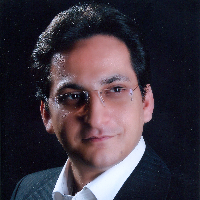Investigating the Mutual Influence between Architecture and Physical Identity, Based on Cyborg
Body and architecture have always influenced each other. Today, human beings are exposed to vast social changes due to the growth of technology and globalization, facing an intelligent world that is becoming smarter every day and awes them with its complexities. What will the future of humans look like in this new world shaped by technology, of which artificial intelligence is an example? And what changes does architecture undergo under the influence of new physical features of the human body?
It seems that the future body will be formed at the intersection of biology and digital technologies; a hybrid body – part human, part tools and technology – called the cyborg. The present study aims to answer the question ‘What will the architecture of the present century look like?’ by examining the physical characteristics of contemporary and future human beings, and it concludes by presenting some recommendations for the architecture of the future.
This study employed a library research methodology involving a review of the ways architecture can be influenced by the physiological characteristics of the body, the concept of communication, and the communication areas between the human body and its internal and external parts. The analysis started by categorizing these cases while discussing the examples of architecture inspired by the body.Then, the same process was followed for the new body, and the future implications of the study were scrutinized.
The development of the scope of impact of the building by digital tools, the use of deep neural networks to make the building intelligent, and the use of fluids to communicate messages at the surface and depth of the building are among the suggestions presented as biomimetic architecture.
-
Rereading the Concept of “Critical Architecture” based on the thoughts of Michael Hays and Jane Rendell
Akbar Dabestani Rafsanjani *, , Saeid Khaghani
Bagh-e Nazar, May 2025 -
Defensive Modernization & Evolution of the Forms in the Urban Structures of Tehran (Naser al-Din Shah Era)
Parisa Heidari *, Hamed Mazaherian, Pirouz Hanachi,
Journal of Design Thinking, Winter and Spring 2022



